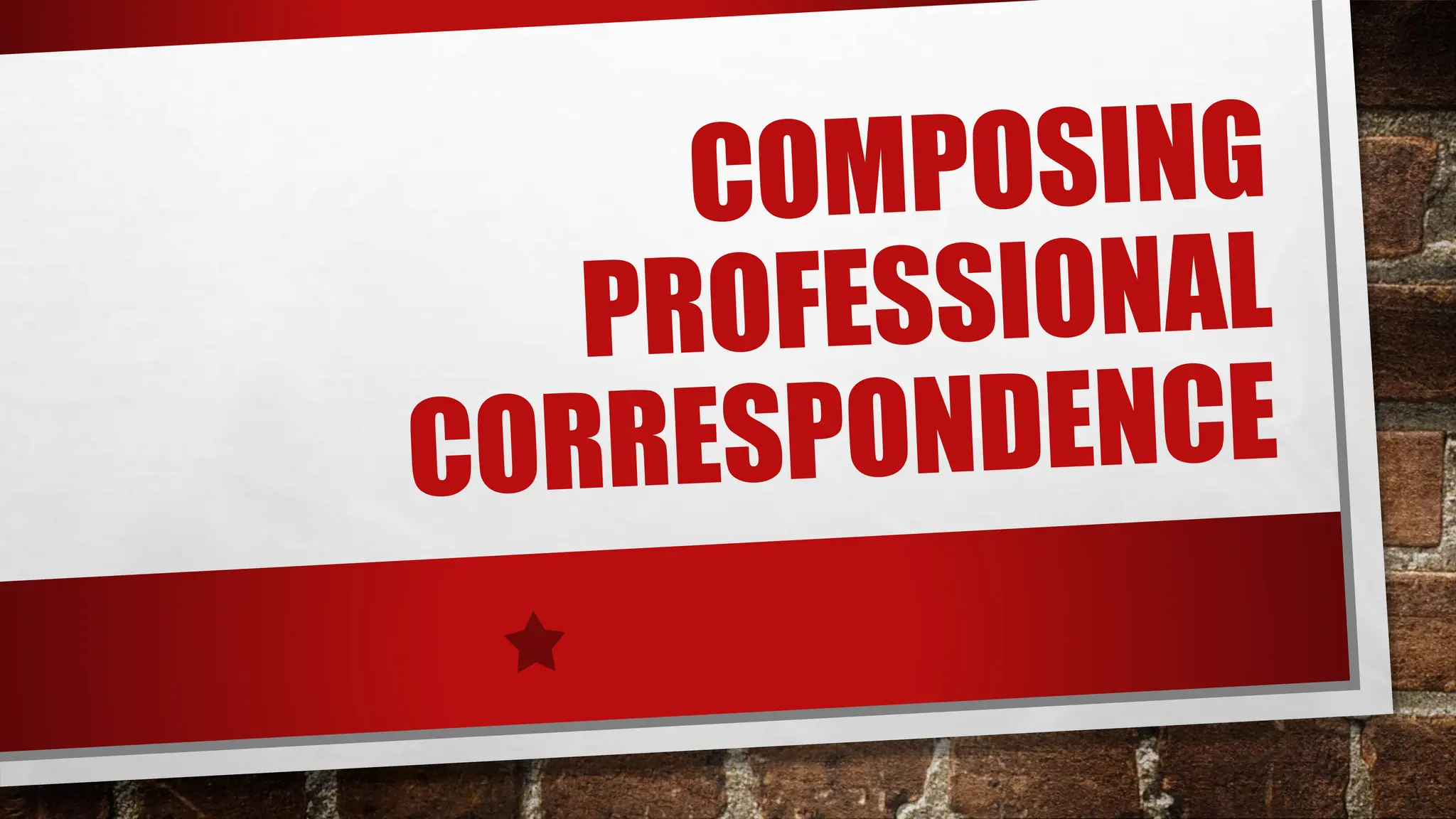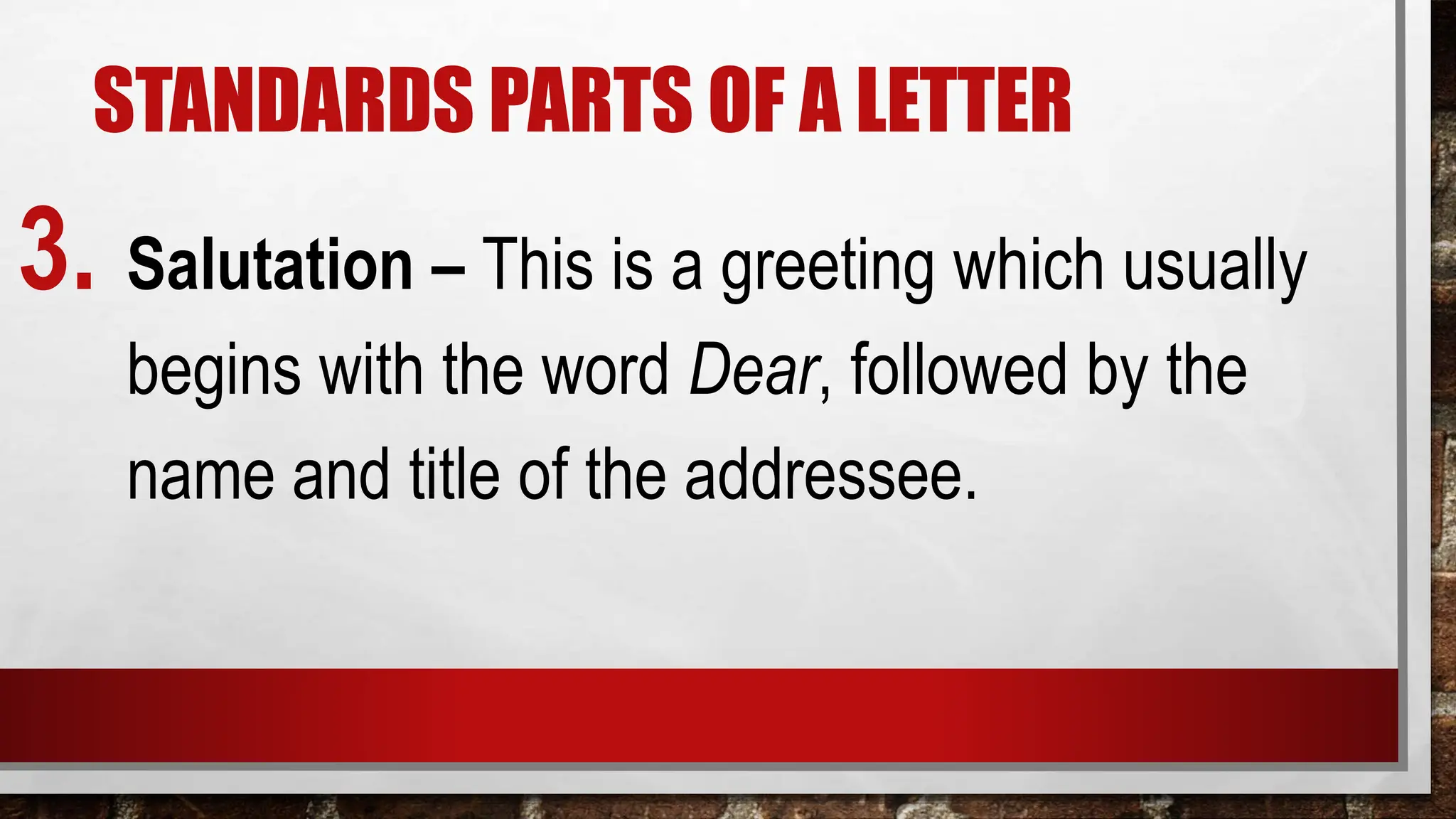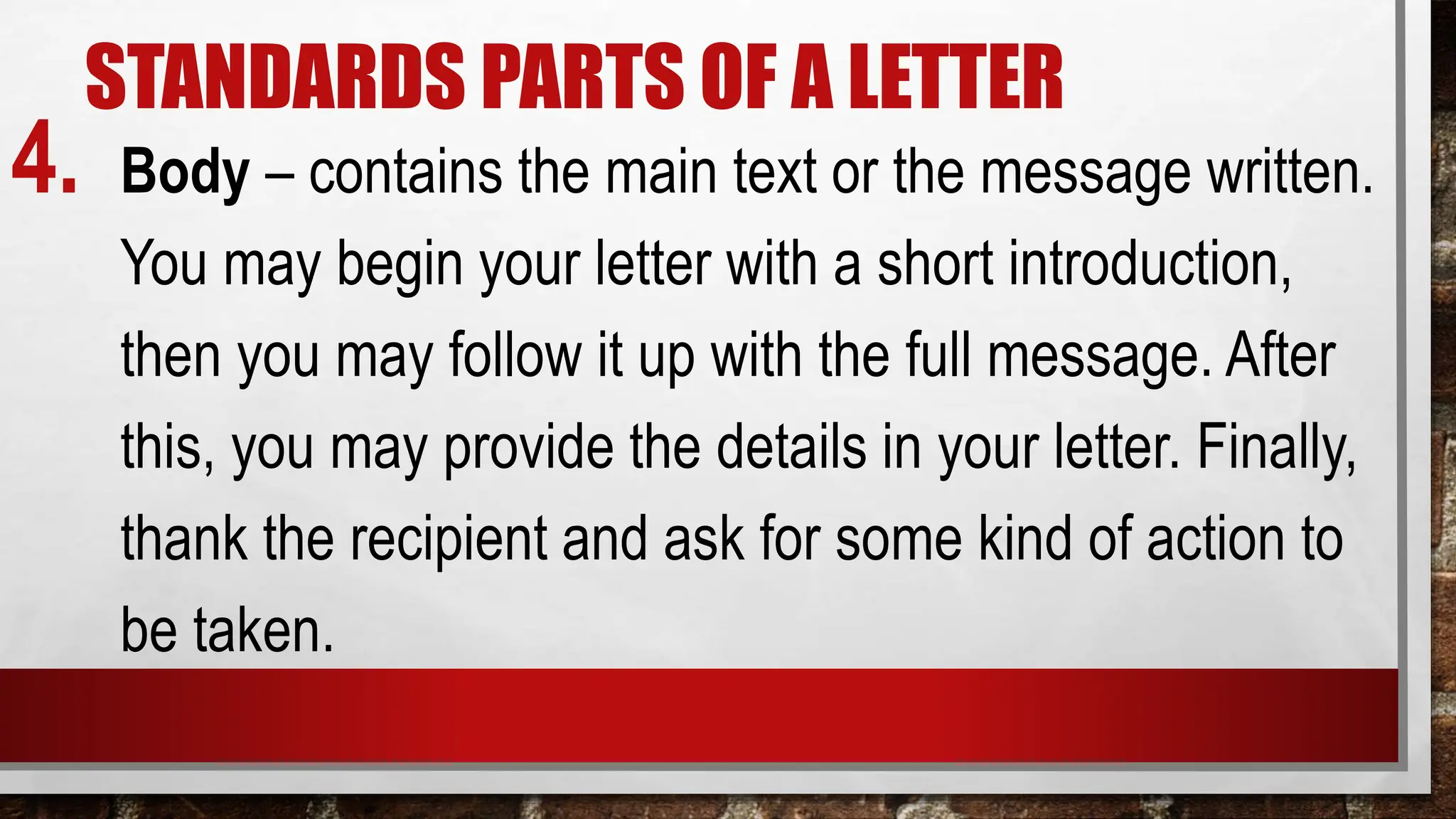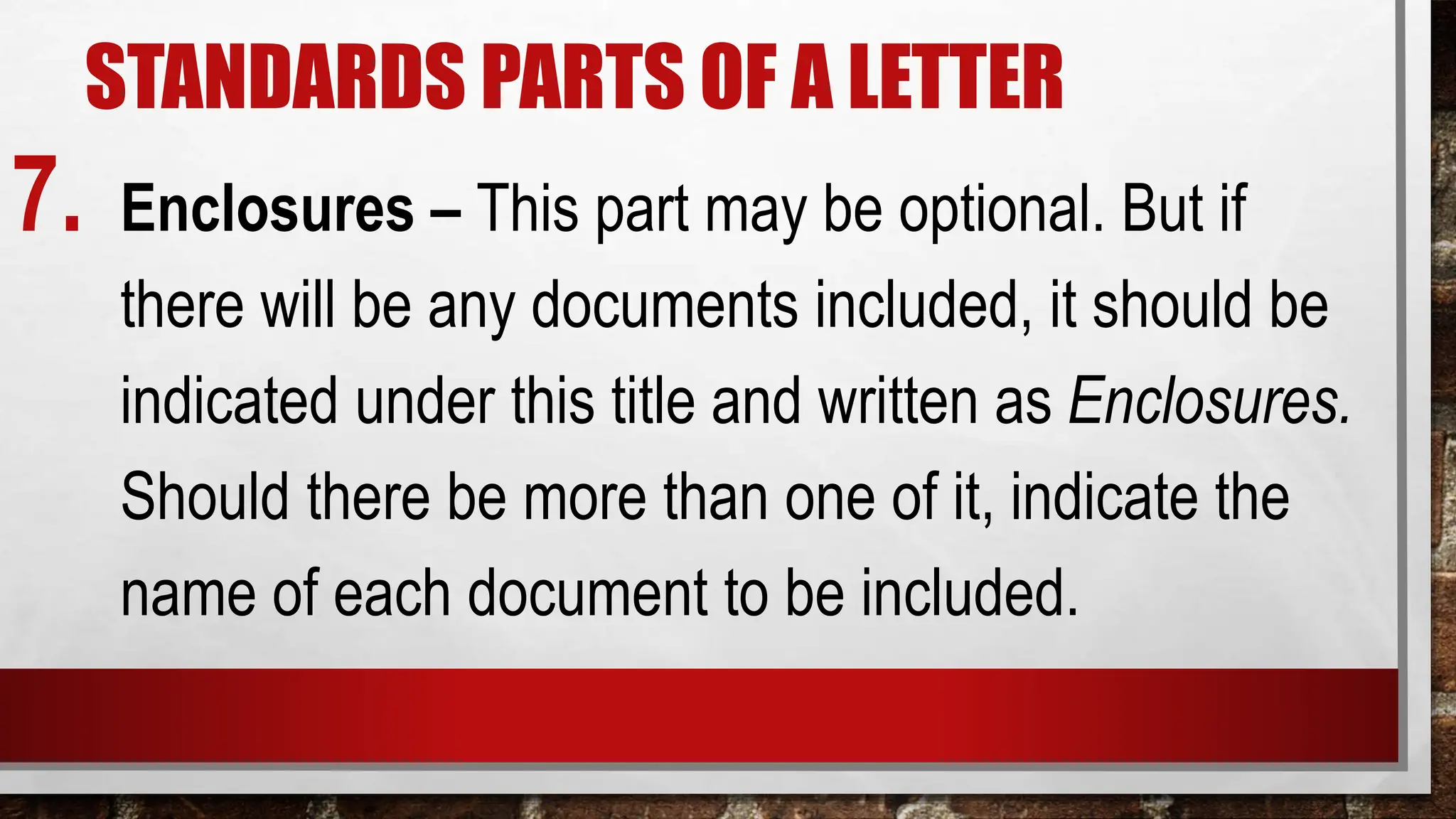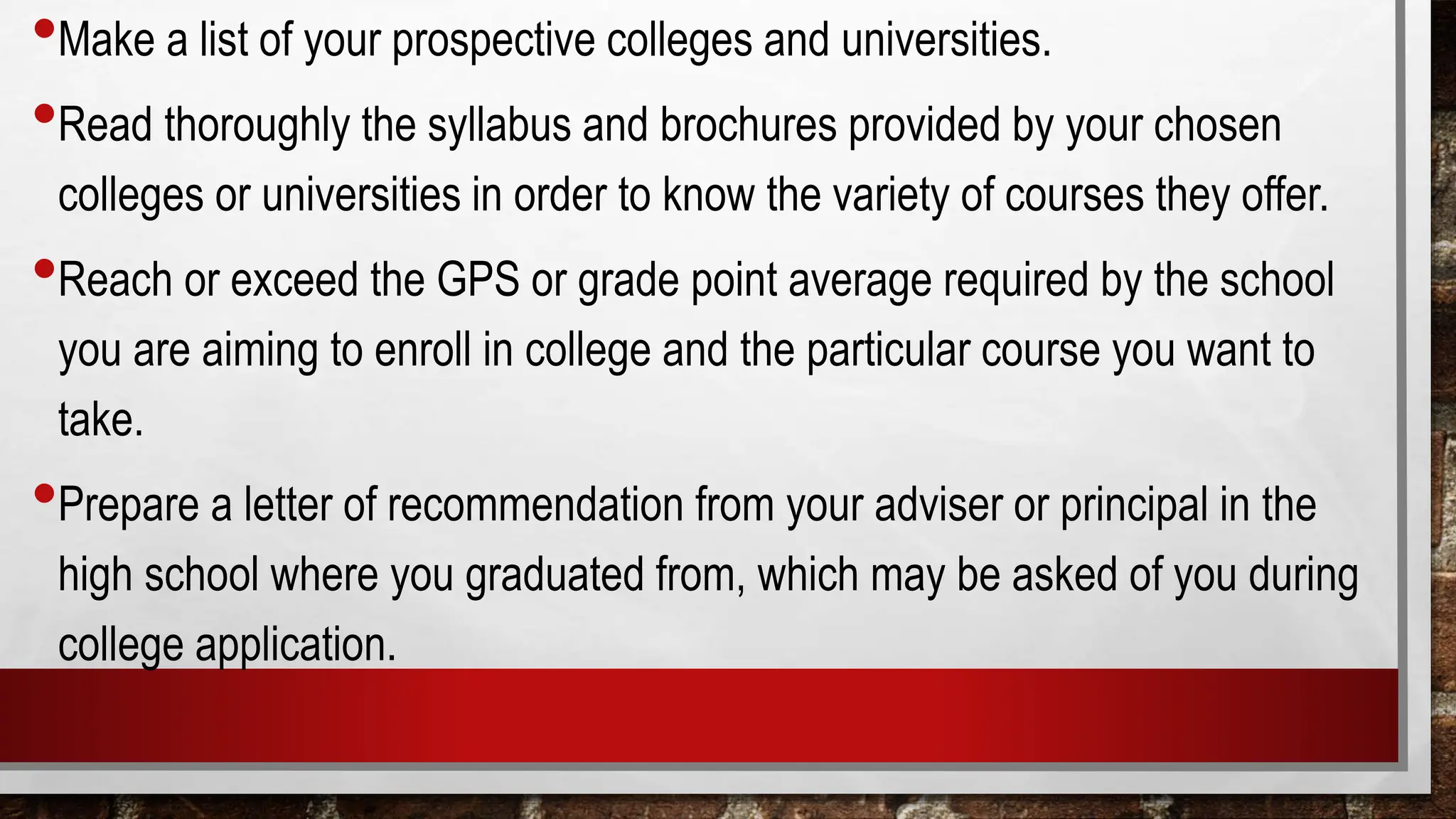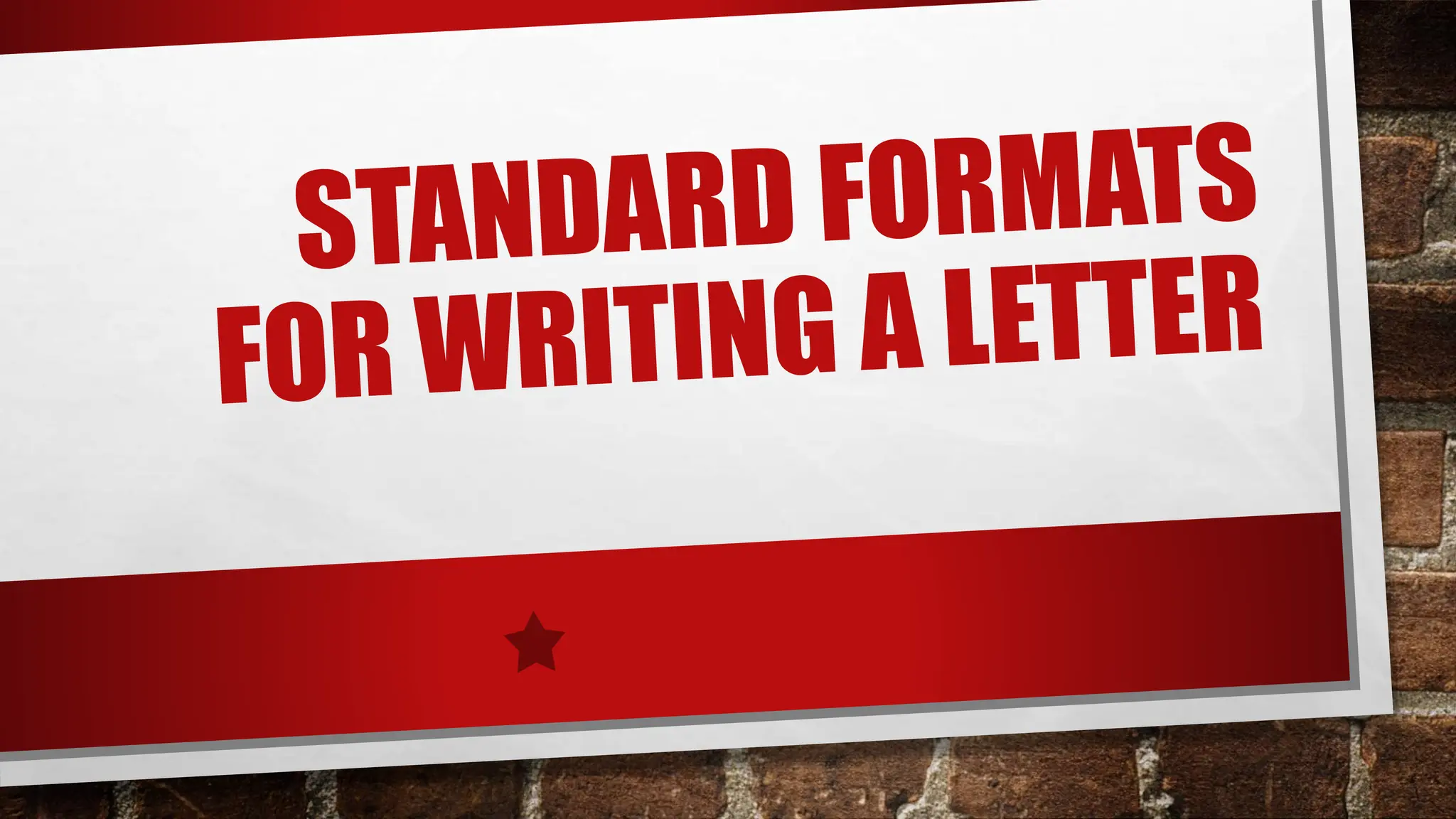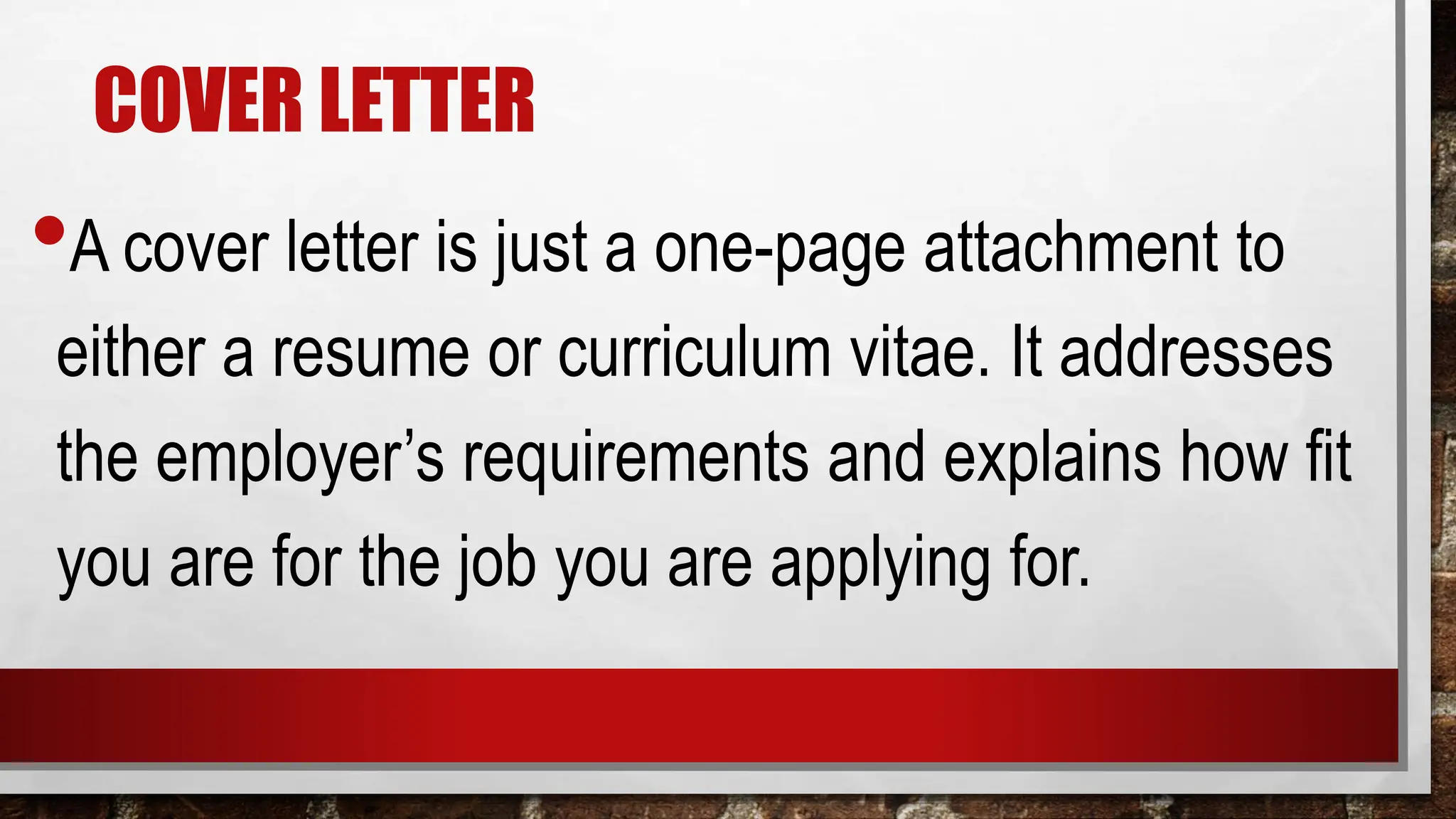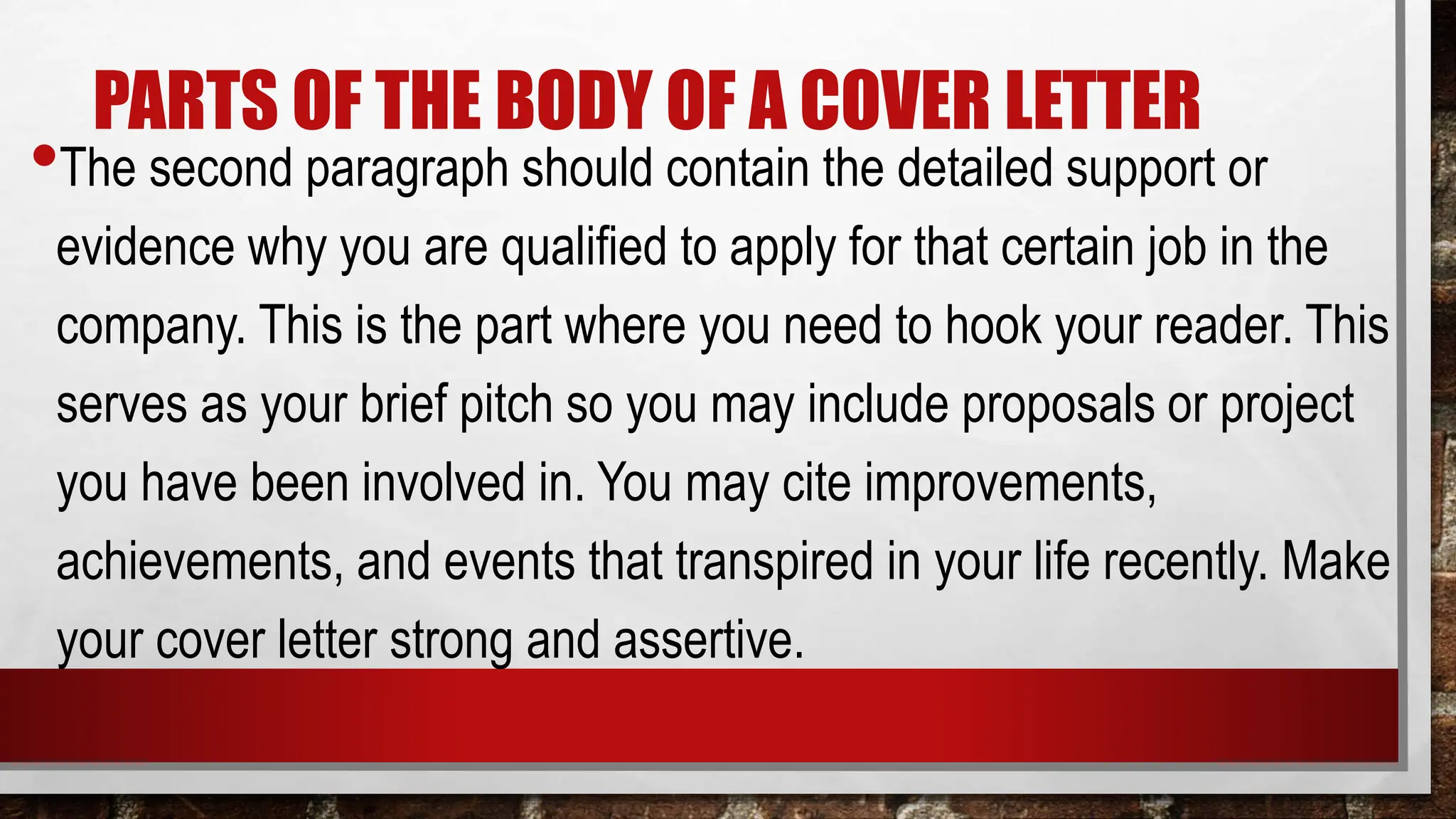The document describes the standard parts of a letter, including the heading, recipient's address, salutation, body, complimentary close, signature line, and enclosures. It then provides details on what should be included in each part, such as the return address, date, and optional contact information in the heading. The body should contain the main message, introduction, details, and a call to action. The document also outlines the formats for writing a letter, such as block and modified block styles.
